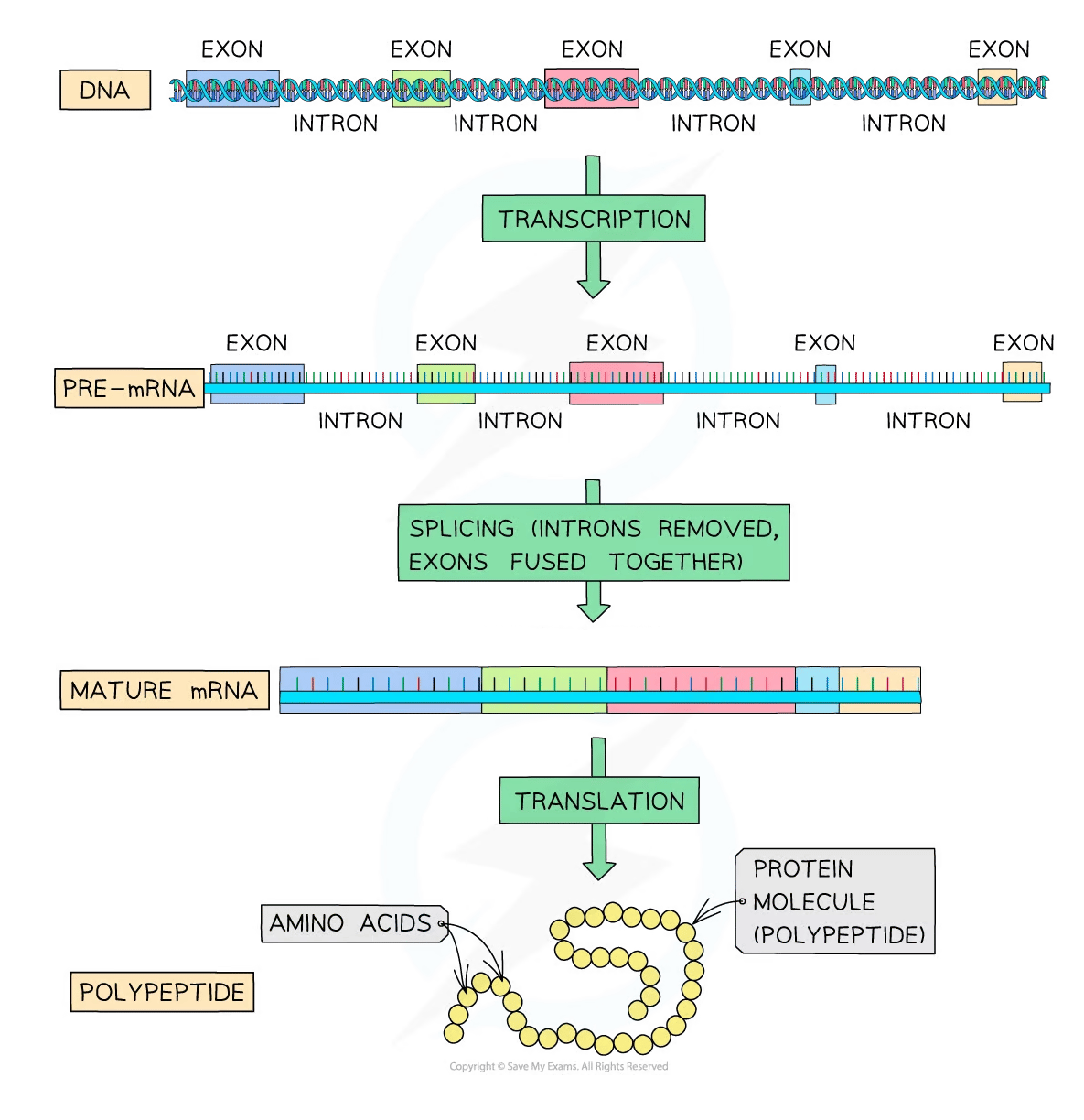Protein Synthesis - An Overview
- All heritable characteristics are coded for in DNA
- Information is taken from the nucleotide base sequence in the DNA to produce an mRNA sequence, this is then converted into the sequence of amino acids in a protein
- Expression of a gene implies the creation of a functional protein which plays a role in determining characteristics
The Gene to Protein Diagram

DNA is the ultimate source of heritable information, and all characteristics are brought about by proteins coded for by DNA
- This process of protein synthesis occurs in two stages:
- Transcription – DNA is transcribed and an mRNA molecule is produced
- mRNA is a single stranded RNA molecule that transfers the information in DNA from the nucleus into the cytoplasm
- mRNA production requires the enzyme RNA polymerase
- Translation – mRNA (messenger RNA) is translated and an amino acid sequence is produced with the help of specific tRNA molecules
- Transcription – DNA is transcribed and an mRNA molecule is produced
RNA Molecules in Protein Synthesis
Messenger RNA acts as a messenger
- It copies the code on the DNA, in short sections, and delivers it to the ribosomes for translation
- mRNA is a short single-stranded molecule with exposed, unpaired bases
mRNA Molecule Diagram
mRNA carries short sections of the DNA code to the ribosome for translation
Transfer RNA transfers amino acids to the ribosome
- tRNA is single-stranded, but folded with hydrogen bonds between some complementary bases, securing its 'clover' shape
- tRNA has an amino acid binding site which carries amino acids specific to an anticodon on the same tRNA
- The anticodon is complementary to a specific codon on the mRNA
tRNA Molecule Diagram

tRNA transfers amino acids to the ribosome and matches up to the codons using the complementary anticodon base sequence
Ribosomal RNA and protein form the ribosome structure
- rRNA facilitates the binding of mRNA and tRNA to catalyze the formation of peptide bonds during translation
- Ribosomes have three tRNA binding sites and one mRNA binding site
- A ribosome has a large subunit and a small subunit
- The mRNA binding site sits in between the two subunits
Ribosome Structure Diagram

Ribosome subunits are made of rRNA and proteins which facilitate translation




